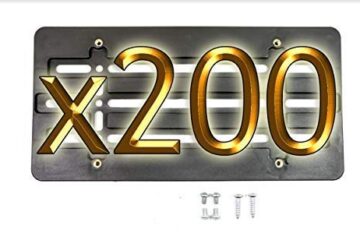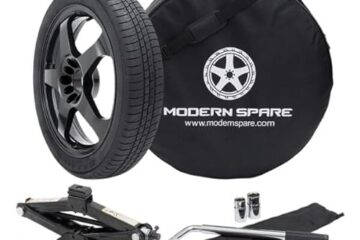Maximize Your Air Power: 3/8 Vs 1/2 Air Hose Comparison
3/8 air hose is smaller than 1/2 air hose, which means it can transport less air. Air hoses come in a variety of sizes and shapes, which can be confusing for those who aren’t familiar with pneumatic tools.
The size of the air hose is crucial because it affects how much air flows through it, which determines the tool’s performance. Among the prevalent sizes of air hoses are 3/8 and 1/2 air hoses. The distinct quality that sets them apart is the diameter of the air hose.
3/8 air hose is smaller than 1/2 air hose, meaning that it can transport less air. However, the 3/8 air hose offers other advantages, such as being more flexible and easier to maneuver, making it ideal for lightweight attention tasks. This article discusses both sizes of air hoses, their features, and where each is most effective.
Introduction To Air Hoses
Air hoses are made of different materials such as rubber, pvc or polyurethane. These hoses are used to connect an air compressor to various pneumatic tools. Air hoses help in delivering the required amount of air to the tools for efficient functioning.
Generally, air hoses come in two sizes: 3/8 inch and 1/2 inch. The right air hose size depends on the air compressor’s output and the tools’ air consumption. 3/8 inch air hoses have been popular in the market, but 1/2 inch hoses are also gaining momentum now.
Choosing the right air hose is crucial for safety and maximizing the performance of pneumatic tools.
Comparing 3/8 And 1/2 Air Hoses
Air hoses play a critical role in powering pneumatic tools. The two primary sizes that you’ll come across are 3/8 and 1/2 inches. One of the main differences between them is their diameter and length. The 1/2″ hose is thicker and can therefore handle higher pressure and flow rates.
On the other hand, the 3/8″ hose is lighter, more flexible, and easier to maneuver in confined spaces. The material and construction of the hoses may also vary, with some being reinforced with braided steel wire for added strength and durability, while others are made of synthetic materials.
Ultimately, the choice between these two sizes will depend on the specific application and the pressure requirements of the tools in use.
Benefits Of Using 3/8 Air Hoses
Air hoses are essential tools for pneumatic tasks. Both 3/8 and 1/2 inch hoses can be used, but using a 3/8 hose comes with a few benefits. It is suitable for most applications, making it versatile and convenient. The 3/8 inch hose is an affordable option, which makes it more accessible for home use or diy projects.
It may not be suitable for heavy-duty construction work, but it’s a perfect choice for everyday uses. Choosing the right size air hose is crucial to achieving optimal performance and getting the job done right. Overall, 3/8 inch hoses are reliable, cost-effective, and perfect for most tasks, making it a preferred choice over 1/2 inch hoses.
Benefits Of Using 1/2 Air Hoses
Using a 1/2 air hose has several benefits over a 3/8 air hose. One of the primary advantages is that it increases productivity, allowing you to finish tasks faster. It is ideal for heavy-duty applications, such as in construction sites and industrial settings.
Additionally, a 1/2 air hose is a durable and long-lasting option, making it a cost-effective choice in the long run. Whether you’re using pneumatic tools or air-powered machines, using a 1/2 air hose will give you more power and efficiency in your work.
So, if you’re looking to upgrade your air hose, consider switching to a 1/2 air hose for improved performance and longevity.
Factors To Consider When Choosing An Air Hose
Choosing the right air hose is crucial. The type of pneumatic tool, application and project requirements, and personal preference all play a role. When selecting between a 3/8 and 1/2 air hose, consider the size of the tools you’re using.
Larger tools, such as a sandblaster or paint sprayer, require a 1/2 hose to deliver the required volume. For smaller tools like a brad nailer, a 3/8 hose may suffice. The application and project requirements are also important factors to consider.
If you’re using the air hose for commercial or industrial purposes, a 1/2 hose is recommended. However, for home use, a 3/8 hose may be more than enough. Lastly, your personal preference, budget, and storage space should also be considered.
Choose the air hose that meets your needs best.
How To Maximize Your Air Power With The Right Air Hose
To maximize air power, understand pressure & flow rate requirements. Select appropriate hose diameter & length. Proper maintenance & storage is important. The 3/8 vs 1/2 air hose decision is crucial for efficiency in pneumatic tools. The diameter determines the volume of air that can pass through the hose.
Length influences pressure drop. A shorter hose minimizes pressure losses. Optimal use requires checking the manufacturer’s specifications for each particular tool. Maintenance and storage assure top performance. Proper handling safeguards against leaks, cracks, and wear. Hang up or coil the hose when not in use.
Store in a dry place away from direct sunlight. Ultimately, choose the right hose and take care of it for enhanced functionality.
Frequently Asked Questions On 3/8 Vs 1/2 Air Hose
What Size Air Hose Should I Use For My Compressor?
We recommend using a 1/2-inch air hose for high-demand tools and a 3/8-inch air hose for general use.
Can I Use A 3/8 Air Hose With A 1/2-Inch Compressor?
Yes, you can use a 3/8-inch air hose on a 1/2-inch compressor, but it may affect tool performance.
Why Is A 1/2-Inch Air Hose Better Than A 3/8-Inch Air Hose?
A 1/2-inch air hose has a larger internal diameter than a 3/8-inch air hose, allowing for higher airflow and better performance with high-demand tools.
Conclusion
The choice between a 3/8 or 1/2 air hose ultimately depends on the job at hand. While a 1/2 inch hose may deliver higher airflow, a 3/8 inch hose can still provide adequate performance for most home or workshop tasks.
Moreover, a smaller hose can offer greater portability and maneuverability, making it a better option for jobs that require good dexterity and flexibility. When it comes to choosing the right air hose, it’s essential to consider the level of air pressure required, the length of hose needed, and the type of work to be done.
By understanding these factors, you can make a more informed decision that meets your specific needs. Remember, purchasing a high-quality hose that is correctly sized for your task can provide you with years of trouble-free service.





0 Comments